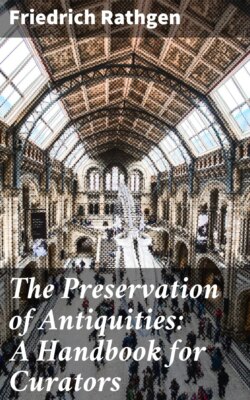Читать книгу The Preservation of Antiquities: A Handbook for Curators - Friedrich Rathgen - Страница 5
На сайте Литреса книга снята с продажи.
PART I.
THE CHANGES UNDERGONE BY ANTIQUITIES IN EARTH AND IN AIR.
ОглавлениеTable of Contents
The greater number of those objects of antiquity which are composed of inorganic materials, such as limestone, earthenware, and metals, owe the commencement of any alteration in their character to the situation in which they are discovered, since they are buried in ground which has been at some period damp or wet, and has contained, moreover, salts soluble in water. Amongst these salts the most usual is sodium chloride (common salt), but this is mostly accompanied by potassium chloride, potassium sulphate, magnesium chloride, and calcium sulphate; in short, by those soluble salts which are found in sea-water. In the fine pores of Egyptian antiquities, especially, such salts occur, and their presence is readily explained by the fact that the land of Egypt was originally a sea-bottom.
The presence of salt in the soil of Egypt has been known for a considerable period. Thus Karabacek[3], quoting from Volney’s “Travels in Syria and Egypt” (Jena, 1788, I. p. 13):
